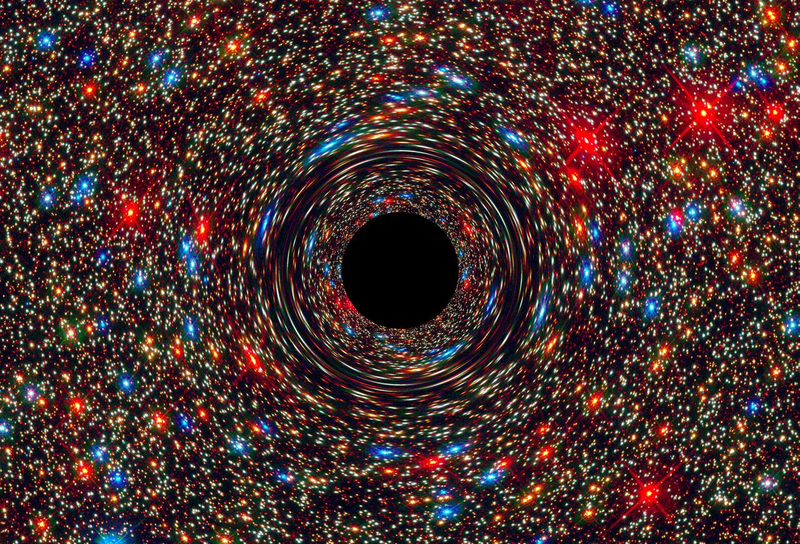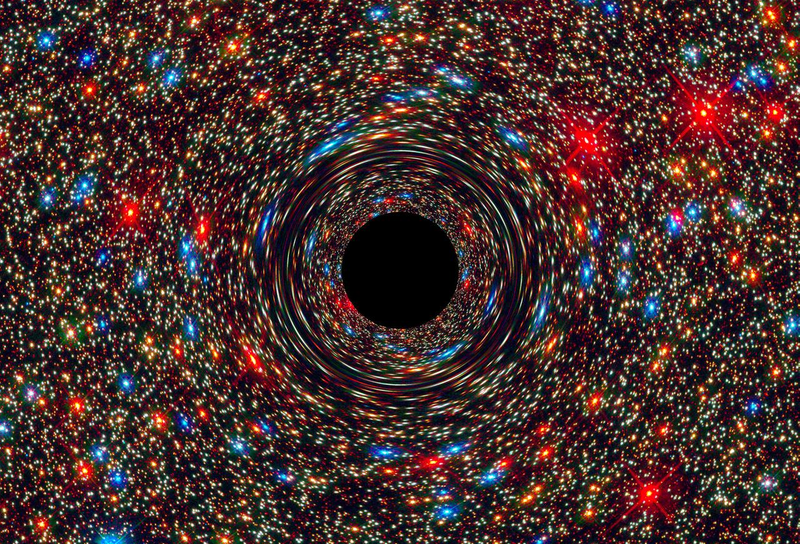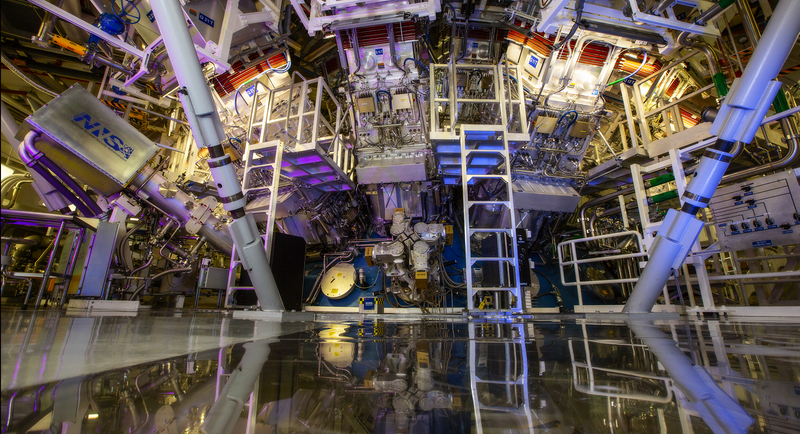Black Holes Can’t Be Created by Light
Black holes are known to form from large concentrations of mass, such as burned-out stars. But according to general relativity, they can also form from ultra-intense light. Theorists have speculated about this idea for decades. However, calculations by a team of researchers now suggest that light-induced black holes are not possible after all because quantum-mechanical effects cause too much leakage of energy for the collapse to proceed [1].
The extreme density of mass produced by a collapsed star can curve spacetime so severely that no light entering the region can escape. The formation of a black hole from light is possible according to general relativity because mass and energy are equivalent, so the energy in an electromagnetic field can also curve spacetime [2]. Putative electromagnetic black holes have become popularly known as kugelblitze, German for “ball lightning,” following the terminology used by Princeton University physicist John Wheeler in early studies of electromagnetically generated gravitational fields in the 1950s [3].
Kugelblitze have been previously enlisted for speculative theories describing exotic physical phenomena ranging from dark matter to cosmic censorship—the hypothesis that the singularity within a black hole is never visible. Light-induced black holes have even been proposed as a means of propulsion for starships. But the question has remained: Are they truly possible?
The problem is that the electromagnetic-field strengths thought to be necessary would generate many quantum particles, as highly concentrated photons may disintegrate spontaneously into electron–positron pairs in a process called the Schwinger effect. These particles, accelerated by the intense electromagnetic field, would then stream out from the region, carrying away energy.
The question is then whether gravitational collapse would still be possible or whether energy loss resulting from the Schwinger effect would undermine it. Mathematical physicist José Polo-Gómez of the University of Waterloo in Canada and his colleagues have carried out calculations to see which way the balance tips.
The amount of electromagnetic energy that must be concentrated within a given spherical volume to form a kugelblitz is easily calculated from general relativity, and it depends on the radius, the speed of light, and the gravitational constant. The hard part of the problem is to estimate the energy dissipation from the Schwinger effect—in particular, how the timescale for particle escape compares to the collapse time of the black hole.
One of the main challenges is accounting for the way that this particle production feeds back on itself, because such particles generate electric fields that influence the creation of more particles. And because the Schwinger effect is more than just a minor correction to the calculations for black hole formation, “many of the usual tools for quantum field theory aren’t helpful here,” say Polo-Gómez and colleagues in a joint statement. As a result, the researchers had to make some simplifying assumptions and approximations and then had to demonstrate that these choices did not affect their conclusions.
Polo-Gómez and colleagues find that the Schwinger effect does indeed dissipate the energy of the electromagnetic field before a kugelblitz can form for all sizes between 10−29 and 108 m. Smaller length scales approach the Planck length, the scale at which quantum field theory breaks down, while at larger scales no known processes in the Universe would be energetic enough to make black holes from light. “We believe that our results settle the debate,” say Polo-Gómez and colleagues. “While it would be scientifically wonderful if we could create microscopic black holes using very intense lasers, our research shows that this is not possible.”
“The results look convincing to me,” says Silvia Pla García, an expert in quantum field theory and gravitation at King’s College London. She adds that the researchers’ approximations all seem reasonable. “The work is exciting from the theoretical point of view because it’s an example of how different things can be when quantum effects are considered,” she says. She notes that this question has long been debated for conventional black holes, which are predicted to slowly evaporate because of pair production near their surfaces. Theoretical physicist Reinhard Alkofer of the University of Graz in Austria agrees that the results are persuasive, although he adds that other experts have long suspected that quantum effects would undermine kugelblitze.
Polo-Gómez and colleagues say that even if their calculations can’t be experimentally verified, the predicted creation of particle pairs by the Schwinger effect could potentially be observed. The highest intensity lasers generate electric-field strengths only 1000 times weaker than the threshold for such particle creation, they say, so future lasers may be capable of generating the effect.
–Philip Ball
Philip Ball is a freelance science writer in London. His latest book is How Life Works (Picador, 2024).
References
- A. Álvarez-Domínguez et al., “No black holes from light,” Phys. Rev. Lett. 133, 041401 (2024).
- J. M. M. Senovilla, “Black hole formation by incoming electromagnetic radiation,” Classical Quantum Gravity 32, 017001 (2014).
- J. A. Wheeler, “Geons,” Phys. Rev. 97, 511 (1955).







